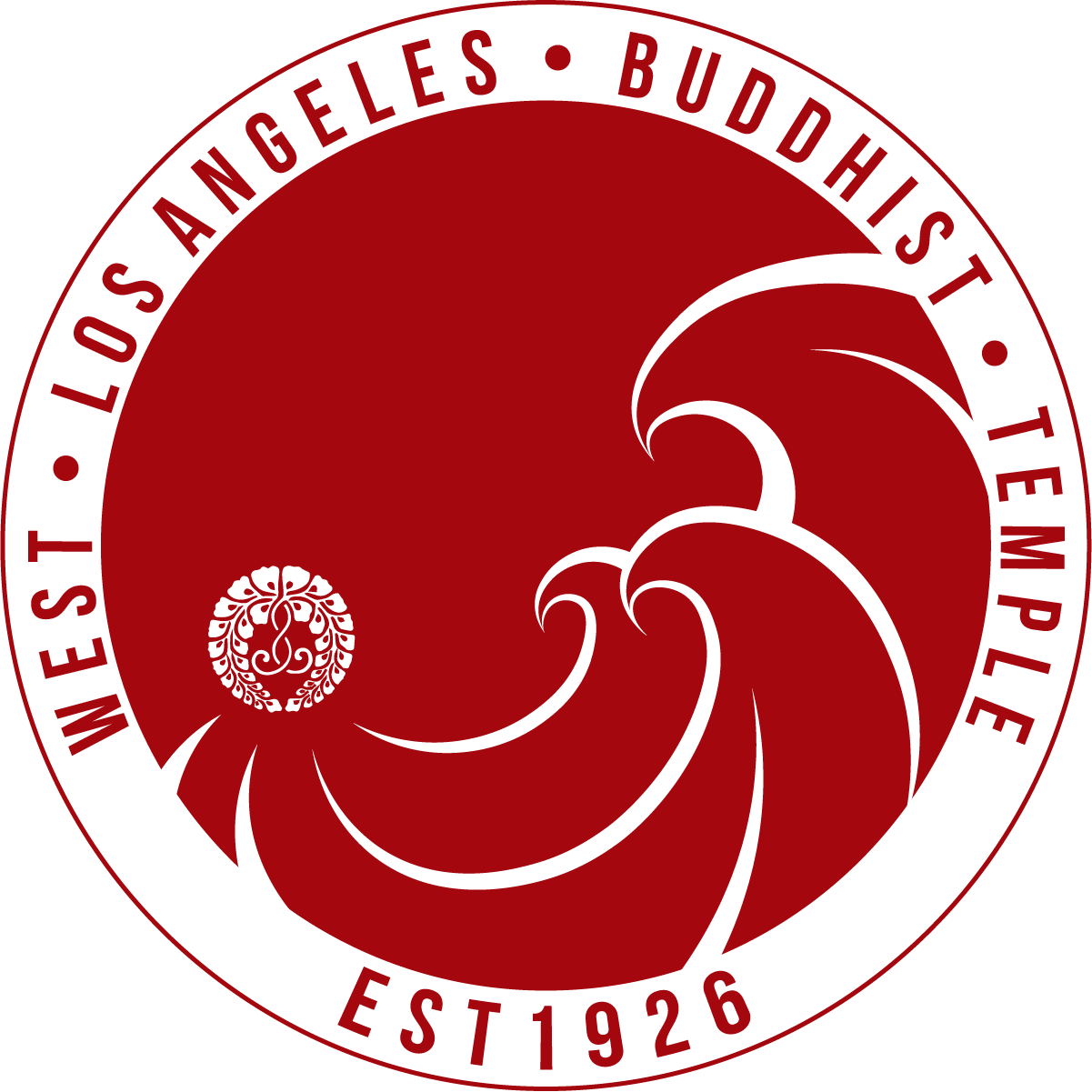
Why We Dance at Obon

Why We Dance at Obon by Rip Rense and Annie Chuck
We have been kindly asked to write a short piece about why we dance in the Obon Festival. There are many reasons.
First is the hospitality and graciousness of the temples in allowing us to participate. When my wife, Annie, suggested six years ago that anyone was welcome to attend West L.A. Buddhist Temple odori practices, my response was “go right ahead!” I’ve never been a dancer, a few foxtrot lessons when I was a kid notwithstanding.
Yet Annie talked me into joining a practice one evening, and I found the moves counterintuitive, baffling to the point of frustration. Suffice to say that my patience was not exemplary. I quit. Annie persevered, though, and I gradually rejoined, eventually figuring out that “back right” meant “saluting” with my left hand, etc. Eureka!
In time, to my surprise, I came to love it to the point where we attend the Obon Odoris all over Southern California.
But this is not so much frivolity to us. We do not regard the event as a mere party, though we relish the festivity of it. We have learned about the history of Obon, the Ullambana Sutra, the traditions as they exist in Japan and United States, and the purpose of affirming life and acknowledging departed persons who have influenced us, whether positively or negatively.
Not long after we began attending Obon Festivals, we purchased the anniversary CD produced by Senshin Buddhist Temple, in order to read the lyrics to the songs, and understand a little about their histories. We also took advantage of a talk about Obon given in Little Tokyo by Rev. Mas Kodani, which we found very rewarding. Rev. Kodani’s well known notions of “tada odore,” or “just dance,” were illuminating. The idea of reaching a point unfettered by ego, and just being in the moment, is one that we embraced long ago as a general approach to life (intellectually, if not always in practice.) Applying it to the dancing seemed natural.
So whether we are doing Tanko Bushi or Shiawase Samba or Hokkai no Abarembo, we are always mindful of those moments free of both embarrassment and showing off, the times when you “tada odore.” Such moments do not always happen, or even often, and when they do, they are fleeting. Over in the snap of a finger, as per Rev. Kodani’s metaphor. Yet they do, as he points out, put us “in the moment,” in the same “tada” existence as all the stuff of life.
But this is not to make too much of a complicated thing out of the proceedings. This is hardly a solemn, ascetic ritual, but rather, as the Jodoshinshu term for Obon, Kangi-e, goes, “a gathering of joy.” We relish joining everyone in the great circle around the yagura—the symbolism of human cooperation is very moving—and we love the intoxicating colors of the yukatas, the brash taiko displays, the smoke from the chicken teriyaki, the cool kintoki. (We haven’t been brave enough to try the chili rice or spam musubi yet, though.)
While West L.A. is our “home” (which we recently formalized by joining the temple), we greatly enjoy visiting the other Obon Odoris and experiencing the varieties of observance and service. In particular, Senshin’s invitation to light oil lamps in memory of others is very affecting (and the cold post-dance somen is refreshing!)
Of course, we also get a great kick out of the variety of dance styles on display: the robust, flamboyant and sometimes free form stylings of some of the men; the economic grace of the ladies; the classical flourishes of some of the more serious students; the exuberance of the young people; the confused steps of the little kids. They are all beautiful.
In sum, we dance for many reasons, and for no reason at all (tada.) We feel privileged to be a part of Obon, and it is, without a doubt, the happiest time of year for us.

